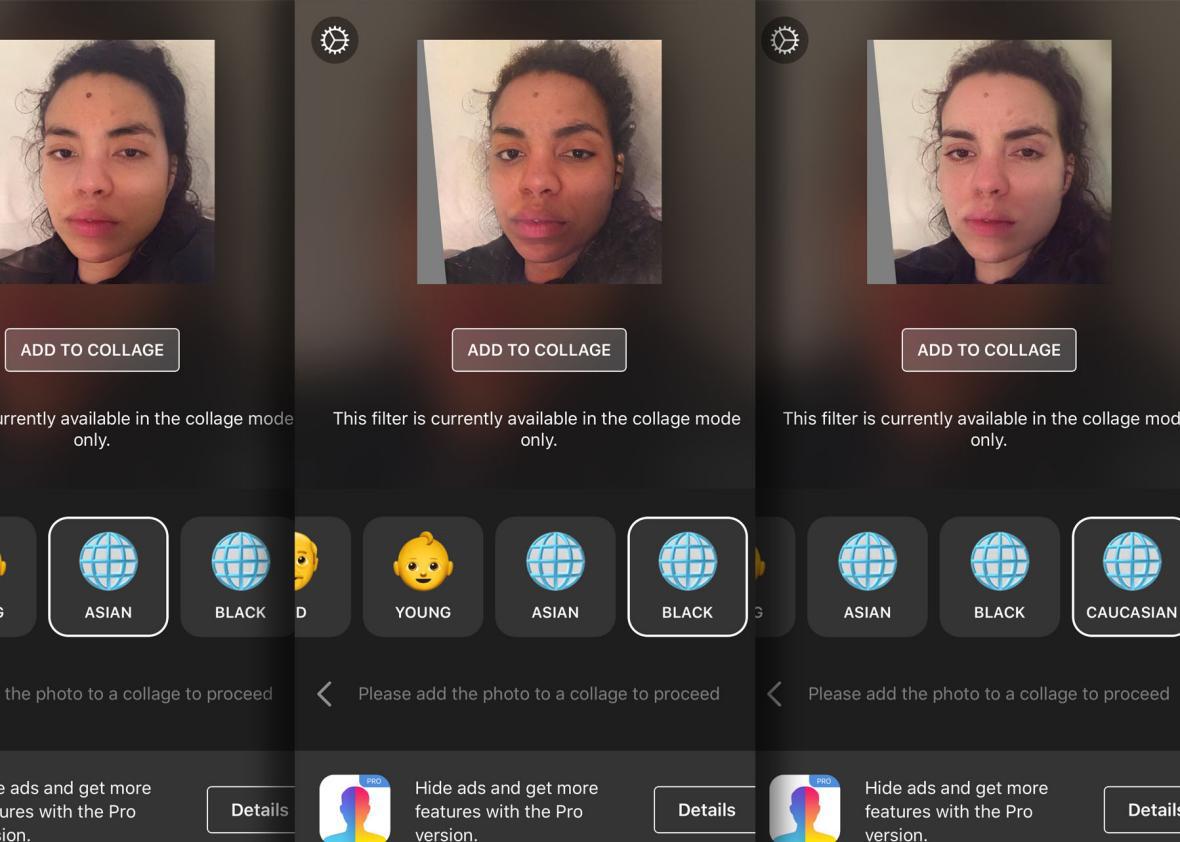For a brief moment on Wednesday, FaceApp—the app that went viral in April for taking a photo of someone’s face and making them look older, younger, more masculine, or more feminine—had a new feature that let users see how they would look if they were a different race. That means white users could make their faces black, and black users could whiten their skin. There was also an Asian filter as well as one to make people look Indian.
Within hours, FaceApp had pulled down the new feature. That’s good. But really: Who thought it was a good idea? Did they actually think that this would go well?
You may be thinking to yourself, This sounds awfully familiar. Haven’t we been through this nonsense before? Yes. Yes, we have. The new race categories were an update to the app. Back in the spring, when everyone first ran to download and play with FaceApp, it had a feature called Spark that lightened users’ skin tone. Spark was removed as an option on FaceApp after users took to social media calling the company out for whitewashing.
At the time, FaceApp called what happened “an unfortunate side effect of the underlying neural network caused by the training set bias, not intended behavior”—a rather ridiculous excuse.
But somehow, for some mysterious reason, Wireless Lab, the company that developed FaceApp, apparently decided to lean in to its race filters, adding even more options than just skin whitening. But adding a blackface filter, an Asian face filter, and an Indian face filter didn’t level things out. At all.
Perhaps the Russia-based company wasn’t aware of the history of racial parodying on our side of the pond. But considering the outrage that ensued after its whitewashing filter, one would think FaceApp had learned that making an app to change people’s race will never, ever, ever, ever be OK. Almost every country in the world continues to grapple with the racist aftermath of hundreds of years of colonial history. There’s too much very real and very recent history of people trying to pass or change their race in order to survive or live a more privileged life.
To be fair, FaceApp isn’t the only photo filter social media app that’s toyed with race. Last year on April 20, the national holiday for marijuana enthusiasts in the U.S., Snapchat offered users a filter that made them look black with dreadlocks. It was obviously a nod to Bob Marley but it was nevertheless a blackface filter, and the company got significant blowback, too. Not that Snap learned its lesson. Later that year, in August, Snapchat released another alarming filter, an “anime” option that made people’s face look more yellow, their eyes look more narrow, and teeth bigger. And yet again, the company was chastised for making a racist filter.
The amazing thing is that this keeps happening—that these features make it to the market at all. Please, tech companies: Knock it off with the race-based face filters. There’s nothing cool about making someone look like a different race. Stick to flower halos, glasses, hats, and animal-ear filters. So many people who use the internet are plenty racist enough already. There’s no need to help.
